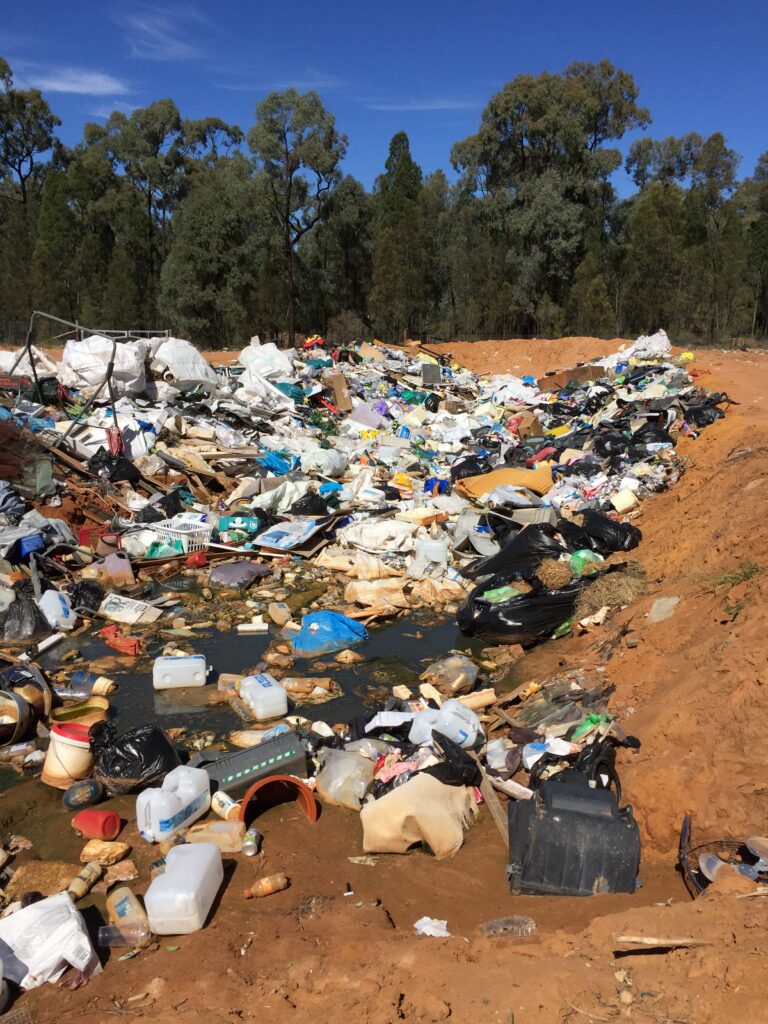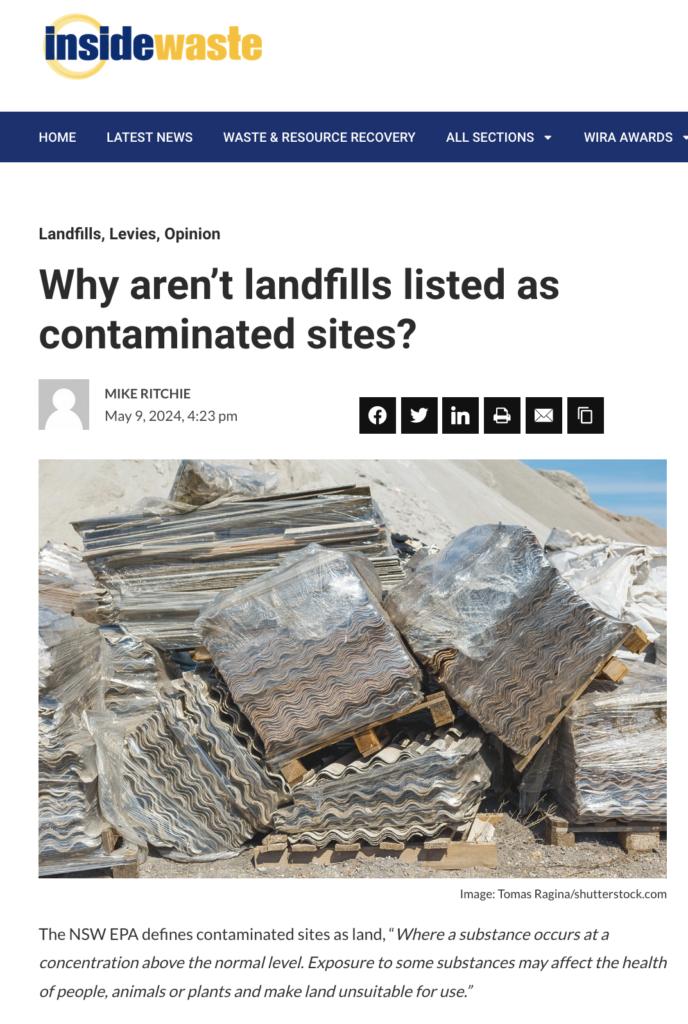Why aren’t all landfills listed as Contaminated sites?
By: Mike Ritchie, MRA Consulting Group

The NSW EPA defines contaminated sites as land:
“Where a substance occurs at a concentration above the normal level. Exposure to some substances may affect the health of people, animals or plants and make land unsuitable for use.”
NSW has over 400 currently active and recently closed landfills. Only 106 are listed on the contaminated lands register. Those listed are generally urban, large landfills both open and closed. The remainder, mostly rural informal landfills and tips, are not registered. Only 20 of the 106 are actually supervised under the Contaminated Lands Act. 61 are not required to be supervised and 30 are “under assessment or other categories”.
In other words of the 400 landfills (plus) in NSW only 20 are actively supervised as contaminated sites by the EPA.
So should all landfills be registered as contaminated sites? I think definitely yes. Why?
Tweet
The key reason is to ensure that we know about them, that they are managed as contaminated sites and that the correct environmental protections are put in place to make sure they don’t pollute.
Note: The EPA does licence large landfills (over 100,000 t/yr input) while councils have responsibility for the day to day management of smaller landfills. But licencing does not require inclusion on the Contaminated Land register.
To determine whether to declare land as ‘significantly contaminated’ and therefore subject to EPA regulation, the EPA assesses:
- whether the substances have already caused harm or are toxic, persistent or bioaccumulative
- whether the substances can be transferred to human beings or features of the environment, for example, through contaminated groundwater or soils
- the current or future uses of the land and the adjoining land
- whether the substances are likely to migrate from the land (or already have migrated) (Contaminated Land Management Act 1997, section 12).
The last time a landfill was added to the Contaminated Land register was 2017.
Putting them on the register guarantees EPA oversight and ongoing monitoring and pollution prevention interventions where necessary.
If you have been to a rural tip you will know that more often than not, everything is thrown in there. Agricultural chemicals, pesticides, demolition including asbestos, PFAS contaminated products, waste from industry, waste from business, household waste including chemicals, paint and pesticides. In other words, just about all the pollutants that our economy generates. It is indiscriminate and largely unknown.
The biggest risk is groundwater contamination via leakage of leachate. Most rural informal landfills are unlined. They can be a simple as cut and fill holes in the ground constructed by the local council operator.
Here is a quote from the EPA web site:
“Common examples of point sources that could contaminate groundwater are leaking underground storage tanks, inadequately managed waste disposal sites and accidental chemical spills. (Contaminated Sites Guidelines for the Assessment and Management of Groundwater Contamination 2007)”.
The EPA then goes on to make my case for me:
Groundwater is important for the health, and in some areas the economic wellbeing, of NSW’s community. It is used: as a source of domestic, recreational, rural and industrial water, and, in some parts of NSW, as drinking water to irrigate gardens, parks, and playing fields in urban environments, especially in recent times by the agricultural and industrial sectors to support food production and other activities to help sustain life in streams and rivers to support fragile ecosystems such as wetlands in dry periods”.

MRA does a lot of work with rural landfills and landfill operators. In our experience most landfill operators welcome EPA involvement because it helps them to justify capital investment and operating expenditure on better landfill management. Councils are always strapped for cash and so long as the landfill is not causing problems, some other squeaky wheel gets dealt with first and always. Landfill management drops to the bottom of the priority list (until it pollutes).
Furthermore, staff often recognise the risk to council of breaching relevant pollution prevention regulations under both the NSW pollution regulations (POEO Act) and the National Environment Protection (Assessment of Site Contamination) Measure 1999 (the ASC NEPM).
While Councils are expected to self-regulate small landfills, it is simply too difficult and requires expert knowledge. The EPA needs to involve itself in these sites and the first step is to include them on the Contaminated Sites Register. If money and resources are the issue, there is $860m per year raised by the NSW s.88 landfill levy that could be put to good use.
Mike Ritchie is the Managing Director at MRA Consulting Group.
This article has been published by the following media outlets:




